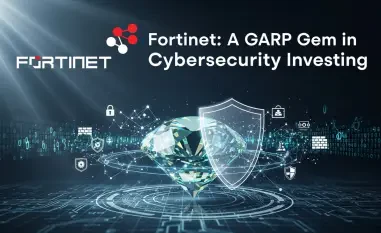Setting the Stage for Secure Remote Access
In an era where remote work has become a cornerstone of business operations, the demand for secure access solutions has never been higher, with over 60% of global enterprises relying on VPN technologies to safeguard their networks. SonicWall SSL VPN stands as a critical tool in this landscape, offering organizations a robust mechanism to ensure encrypted connections for employees accessing sensitive data from diverse locations. This review delves into the intricacies of SonicWall’s SSL VPN technology, particularly in light of recent security challenges that have tested its resilience.
The focus here centers on the latest developments surrounding SonicWall’s Gen 7 and newer firewalls, which have faced a surge in malicious activity targeting their SSL VPN features. These incidents have raised pressing questions about the technology’s ability to withstand evolving cyber threats. By examining its features, vulnerabilities, and the manufacturer’s response, this analysis aims to provide a comprehensive perspective on where SonicWall stands in the cybersecurity domain.
Detailed Analysis of SonicWall SSL VPN Features and Performance
Core Technology and Security Framework
SonicWall SSL VPN operates by creating a secure tunnel over the internet, allowing remote users to access internal network resources as if they were on-site. Built into the Gen 7 firewall series, this technology leverages advanced encryption protocols to protect data in transit, ensuring confidentiality for corporate communications. Its user-friendly interface and compatibility with various devices have made it a preferred choice for many businesses seeking seamless integration with existing infrastructure.
Beyond basic connectivity, SonicWall incorporates features like granular access controls and real-time threat detection to bolster security. These elements are designed to prevent unauthorized access and mitigate risks from malicious actors. However, the effectiveness of these safeguards has come under scrutiny due to recent vulnerabilities that have exposed potential weaknesses in the system’s design, prompting a closer look at its performance under pressure.
Unveiling CVE-2024-40766: A Critical Flaw
At the heart of recent concerns lies CVE-2024-40766, an improper access control vulnerability with a CVSS score of 9.3, indicating a severe risk. This flaw, disclosed in August of the prior year, could enable attackers to gain unauthorized access to device resources and, under certain conditions, cause firewall crashes. Such a vulnerability poses a significant threat to organizations relying on SonicWall for secure remote access, highlighting gaps in the technology’s protective measures.
SonicWall’s advisory detailed how this issue affects the SonicOS management access, potentially allowing malicious entities to exploit unpatched systems. The severity of this vulnerability underscores the importance of timely updates and robust security configurations. As attacks exploiting this flaw have surfaced, understanding its implications becomes essential for assessing the overall reliability of SonicWall’s SSL VPN solution.
Response and Patch Implementation
Following the disclosure, SonicWall swiftly released a patch to address CVE-2024-40766, emphasizing that the recent spike in attacks does not stem from a zero-day exploit but rather from this now-patched issue combined with password reuse. The company has clarified that adherence to updated firmware, specifically SonicOS version 7.3.0, is critical for mitigating risks. This response demonstrates a commitment to addressing security flaws, though the effectiveness hinges on user compliance with recommended actions.
Additionally, SonicWall has enhanced protections in SonicOS 7.3.0 against brute-force password attempts and introduced stronger multi-factor authentication (MFA) capabilities. These updates aim to fortify the SSL VPN against persistent threats. Yet, the challenge remains in ensuring that organizations implement these patches promptly, as delays have contributed to ongoing exploitation by malicious actors.
Attack Trends and Real-World Implications
Security vendors have reported a marked increase in attacks targeting SonicWall Gen 7 firewalls with SSL VPN enabled, particularly linked to ransomware campaigns such as Akira and Fog. These attacks, observed over several months, exploit unpatched systems to infiltrate networks, posing a dire threat to data integrity and business continuity. The trend illustrates how quickly cybercriminals adapt to known vulnerabilities, capitalizing on any delay in patch application.
SonicWall’s investigation into fewer than 40 incidents reveals that many cases are tied to migrations from Gen 6 to Gen 7 firewalls without resetting local user passwords—a critical oversight. Meanwhile, cybersecurity firm Huntress has documented at least 28 incidents as of early this year, underscoring the widespread impact. These real-world examples highlight the tangible risks of neglecting security best practices in SSL VPN deployments.
Challenges in Deployment and Mitigation Efforts
One of the primary challenges with SonicWall SSL VPN lies in user behavior, specifically the reuse of passwords and failure to update firmware promptly. Such practices have facilitated recent attacks, exposing organizations to unnecessary risks. This issue is compounded during hardware migrations, where outdated credentials often remain unchanged, creating easy entry points for attackers.
To counter these threats, SonicWall recommends several mitigation strategies, including updating to the latest SonicOS version, resetting all local user passwords, enabling Botnet Protection and Geo-IP Filtering, enforcing MFA, and removing unused accounts. These steps aim to close security gaps, but their success depends on diligent implementation by end users. The technology itself provides the tools, yet the human factor remains a critical variable in maintaining a secure environment.
Final Thoughts and Path Forward
Reflecting on the evaluation of SonicWall SSL VPN, it becomes evident that while the technology offers robust features for secure remote access, its performance has been significantly challenged by the CVE-2024-40766 vulnerability and subsequent attack waves. SonicWall’s prompt patch release and enhanced security measures in SonicOS 7.3.0 mark a commendable effort to address the flaws, though the incidents expose the critical need for user adherence to security protocols.
Looking ahead, organizations using this technology should prioritize immediate firmware updates and enforce strict password policies to prevent similar breaches. Implementing multi-factor authentication and regularly auditing user accounts emerge as non-negotiable steps to strengthen defenses. As cyber threats continue to evolve, fostering a culture of proactive security within enterprises will be vital to ensure that tools like SonicWall SSL VPN remain effective shields against digital adversaries.













